Whistle-wing, Common Goldeneye: Northern Naturalist # 21
Common Goldeneye, Learn the Robin-like Songs, Review of birdcast.info, plus News and Notes
This winter, the Duluth, Minnesota shipping channel hosted a flock of hundreds of Common Goldeneyes (Bucephala clangula). Many birders perused the flock, because hidden in the horde of Common Goldeneyes were a Barrow’s Goldeneye, a White-winged Scoter, and a Harlequin Duck. The Barrow’s is quite rare here; the scoter is regular in fall migration, but fun to see in the winter; same with the Harlequin.
We are a bit jaded about Common Goldeneyes, but they are a sharp-looking duck.
The breeding range of Common Goldeneye is almost entirely in Canada, but we do find nesters here in northern Minnesota. They are cavity-nesters, who will use boxes. I once sat on the veranda of a resort near the Canadian border and watched a goldeneye come flying across the lake. It didn’t seem to slow down at all, even when it flew straight into a nest box! In a second, however, it peeked out of the hole, seeming hale and healthy. How it managed that, I couldn’t say, but it was something to see.
Around this time of year, the big flocks we sometimes find on Lake Superior split up, and pairs seek out nesting sites on smaller lakes.
Common Goldeneyes are sometimes caller “whistlers,” or “whistle-wings,” due to the sound made when they beat their stiff wings in flight. I had the pleasure this winter of stepping out onto my front stoop in the dark and hearing “whistlers” passing overhead.
Barrow’s Goldeneye (Bucephala islandica) is a closely-related western species. Note the crescent-shaped, white cheek mark, as well as purple sheen on the head feathers, rather than the green of Common. Also, the back and side of a Barrow’s has more black and less white than a Common, and the head shape (as shown in these photos) is different, as is the bill shape. These shapes are the best field marks, but it’s not always a straightforward identification issue. The photos I have here are breeding-plumage birds, which are easier to identify than at other times of the year.
On a few occasions, I have led groups that found females leading ducklings around near the shore. Almost no other sighting elicits a more heart-felt and enthusiastic response than a flock of cute little babies skittering along across the water. We’re maybe six weeks from finding young on a lake, a sight I look forward to as we pass from spring to summer.
Learn the Robin-like Bird Songs
One good entry into birdsong is to learn the song of a common bird and then learn the differences between that song and other similar ones. For example, the American Robin is one of the most widespread and conspicuous bird species in North America. It is so easy to find and to listen to that you can learn its song quickly. Once you’ve done that, you can compare unfamiliar songs with the robin’s in a way that helps you place them and remember.
I am writing here about the robin’s typical breeding song, which is a back-and-forth series of notes. Listen to it here, and then (most of you) get out and listen for it outdoors. Once you know it well, you can start comparing and contrasting with the songs of other species.
For example, the song of the Rose-breasted Grosbeak also flips back-and-forth. Notice, however, that it lacks the thrushy, complicated overtones of the robin. It is more musical, and it is faster, which is perhaps the easiest thing to notice. I think of it as kind of wobbly.
Another back-and-forth song is that of the Scarlet Tanager. It has been described as “a robin with a sore throat,” in an attempt to get at the hoarse tone of the tanager. This is a great one to learn, because tanagers tend to hang in the canopy of deciduous forest, and if you learn the song, you have a much better chance of locating their splendid scarlet plumage.
Another common but less accessible species with a back-and-forth song is Red-eyed Vireo. For this one, note the lack of thrushy or reedy tone, and the simple, warbled back-and-forth. This bird is almost as widespread as the robin, but its muted colors and still habits make it hard to see. Best to learn its song.
Here in the North, we need to distinguish between Red-eyed Vireo and Blue-headed Vireo. Note the wider range of the Blue-headed’s song. The tone is quite similar, but once you know these two, the Red-eyed’s song will sound tame and monotonous compared to the Blue-headed. (This species was called Solitary Vireo in older books.)
There are other species with somewhat robin-like songs, but for now, try to learn and hear these five if you have the opportunity.
Review of birdcast.info

Early operators of radar were puzzled by flare-like clouds that showed up on their screens. These clouds were clearly not aircraft, and eventually, it became apparent that they were flocks of migrating birds, so dense that they manifested on the radar in this way. The same thing happens with bats and bugs, and this discovery launched a new angle for studying bird migration.
The most accessible way to find and learn about this is to visit birdcast.info. This joint project is by the Cornell Laboratory of Ornithology, Colorado State University, and UMass-Amherst. I visit the site every day during migration, mostly to check the daily maps like the one above, from April 9th. If you look at northeastern Minnesota on that map, you’ll see not much. Migration had not really begun (many birds were migrating, but not in hordes that show up on night radar—the big groups right now are raptors and ducks, which are more likely to fly during the day)
This is a good place to say that most birds migrate at night, when the conditions are less turbulent and there are fewer predators about. Birds in numbers that you can’t imagine fly over your house at night during migration. Getting a “glimpse” of these flights is part of the excitement of the use of radar.

I use the daily maps to help me decide which days I really need to be out, if it looks as if there’ll be an enormous flight and new birds here in the morning. There is also a live map feature like the map just above this paragraph, so you can tune in to see what’s going on as it happens.
These maps are why I keep heading back to the site daily, but there’s a lot more. The graphic below is just one example of the kind of information presented there.

There’s also a primer for learning about radar and bird migration. Bird migration is one of the marvels of life on earth, and I recommend that you check out BirdCast to learn more.
News and Notes
My St. Louis County Big Year limps along. It’s usual for things to still be slow in March, but April is my fault. Once again, work is interfering with birding; it’s happened before. I am up to 60 species, adding Turkey Vulture, Song Sparrow, American Robin and Common Grackle since my last update. Fortunately, it’s still early, and the heart of the spring migration is yet to come.
As I waited for the bus early in the morning the past week, the notable change was the arrival of many American Robins and (try to contain your excitement) Common Grackles. Some robins over-winter here every year, but I love it when the hordes return, and suddenly, there’s robin song everywhere. Soon, my enthusiasm will wear off, and the robins will fade into the background. Even the grackles were a pleasure to watch this week. There were a dozen in my view, courting, and screeching, and chasing the starlings, as large flocks of more grackles zipped by overhead.
“There is no time like Spring,
When life’s alive in everything,”
—Christina Rosetti, “Spring”
Enjoy the life of spring while we may, Dear Reader, and thank you for reading!





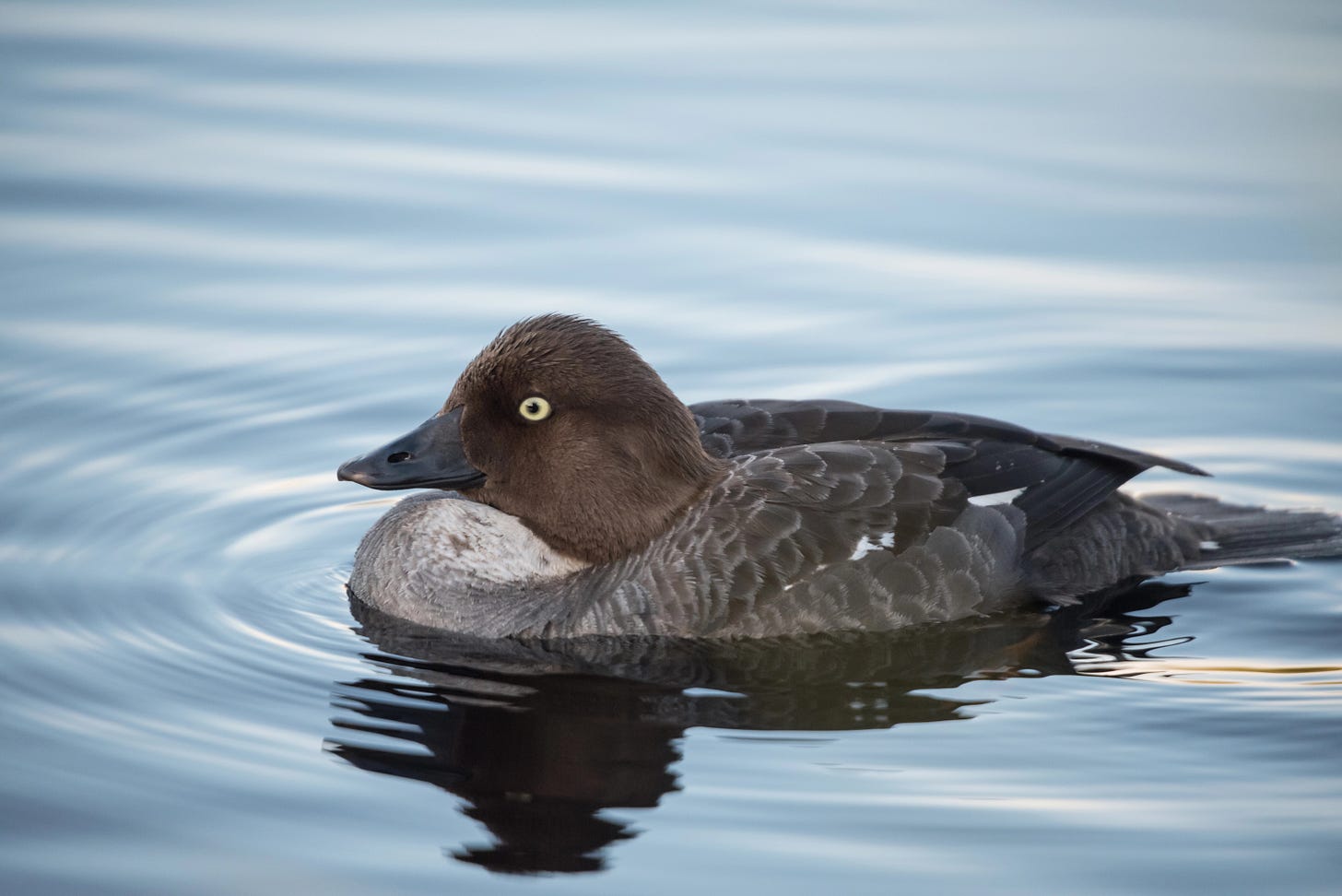
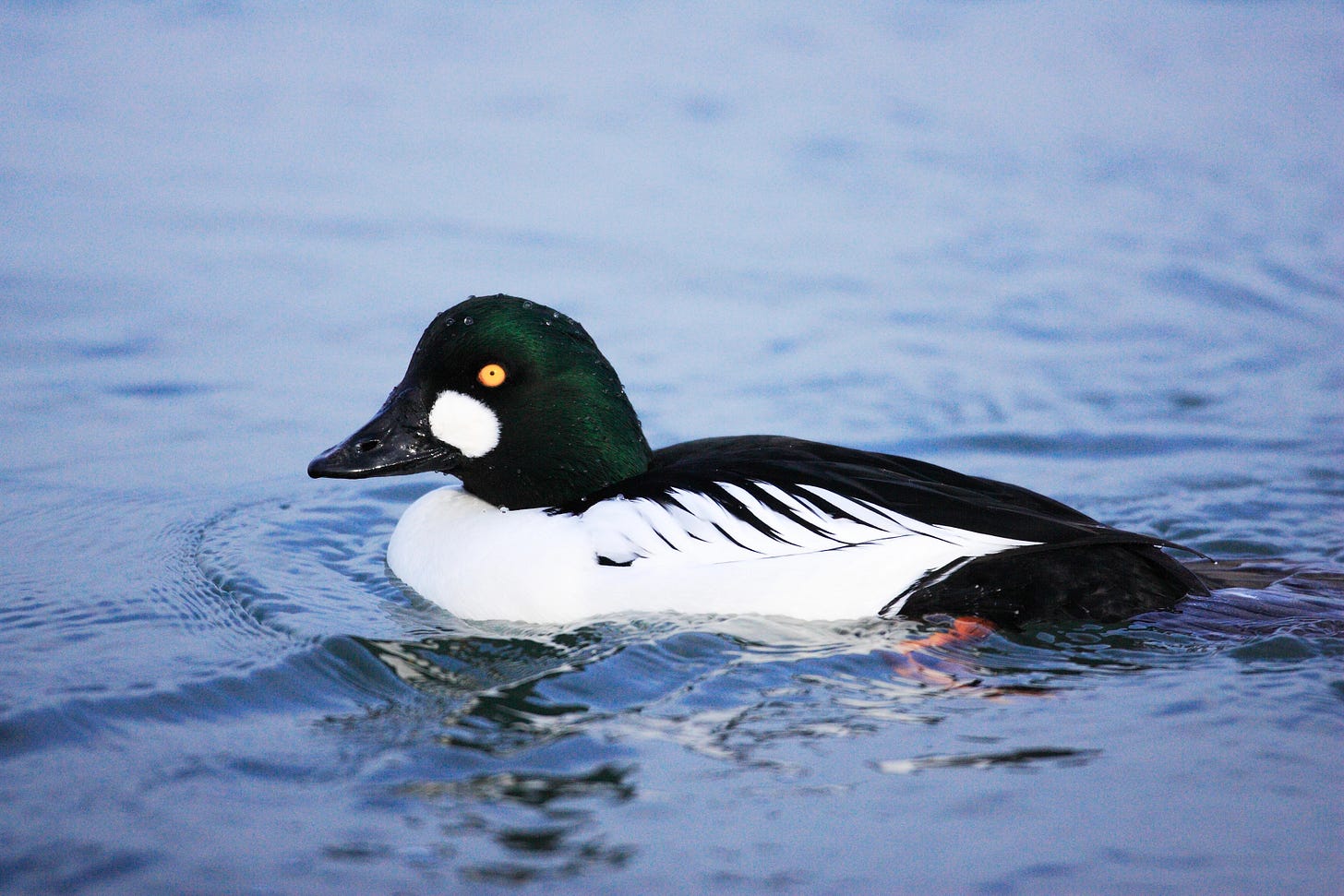
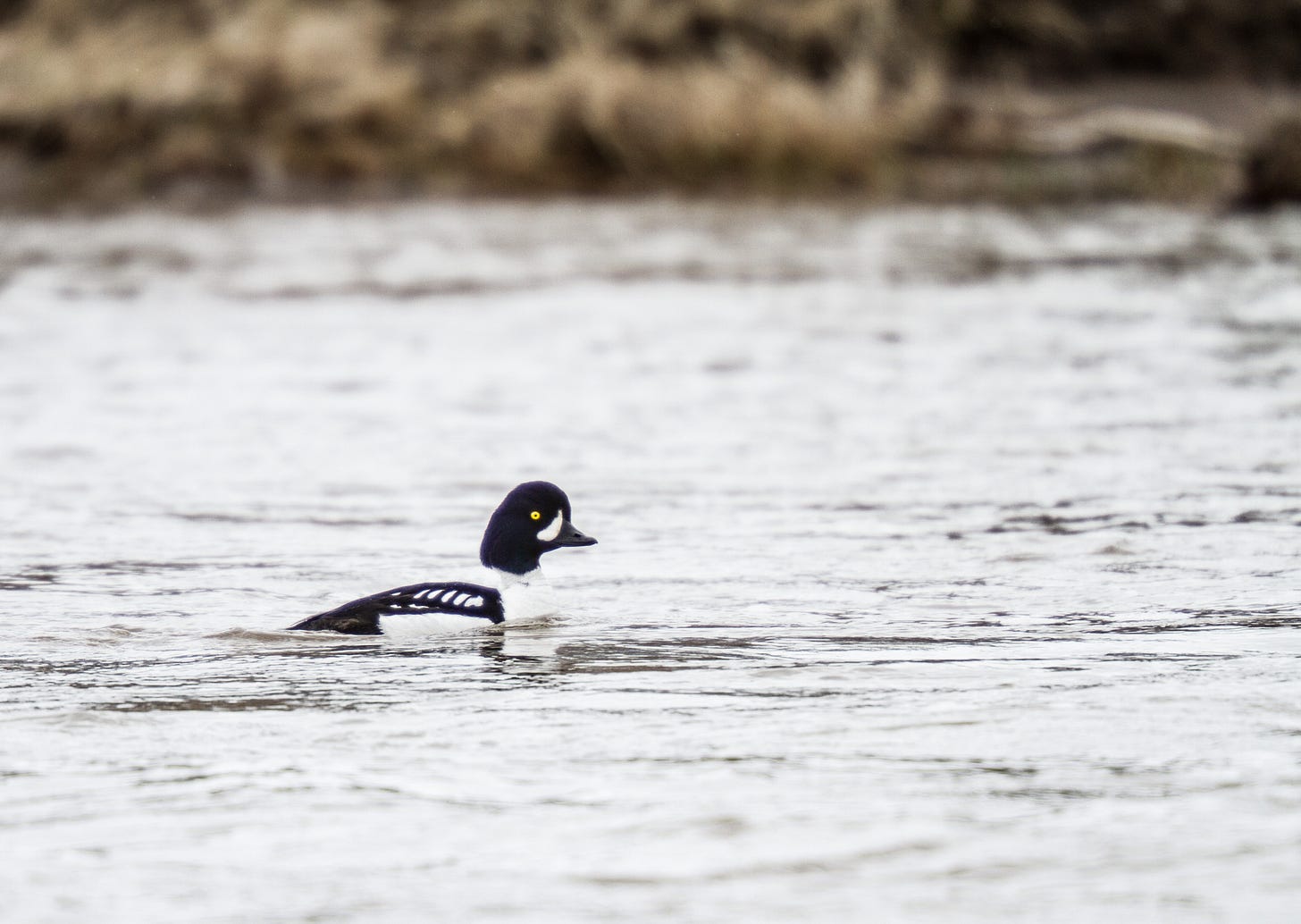
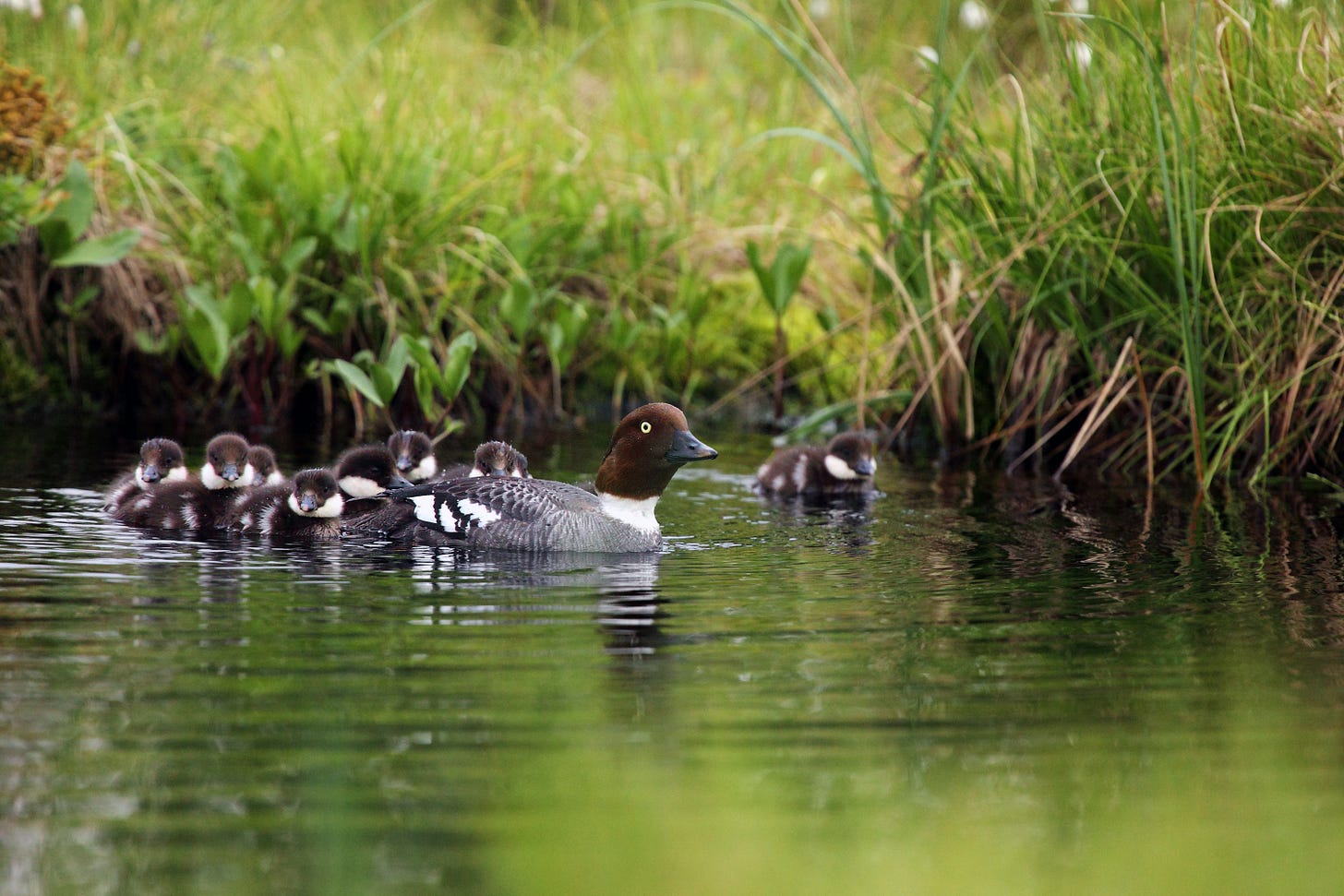



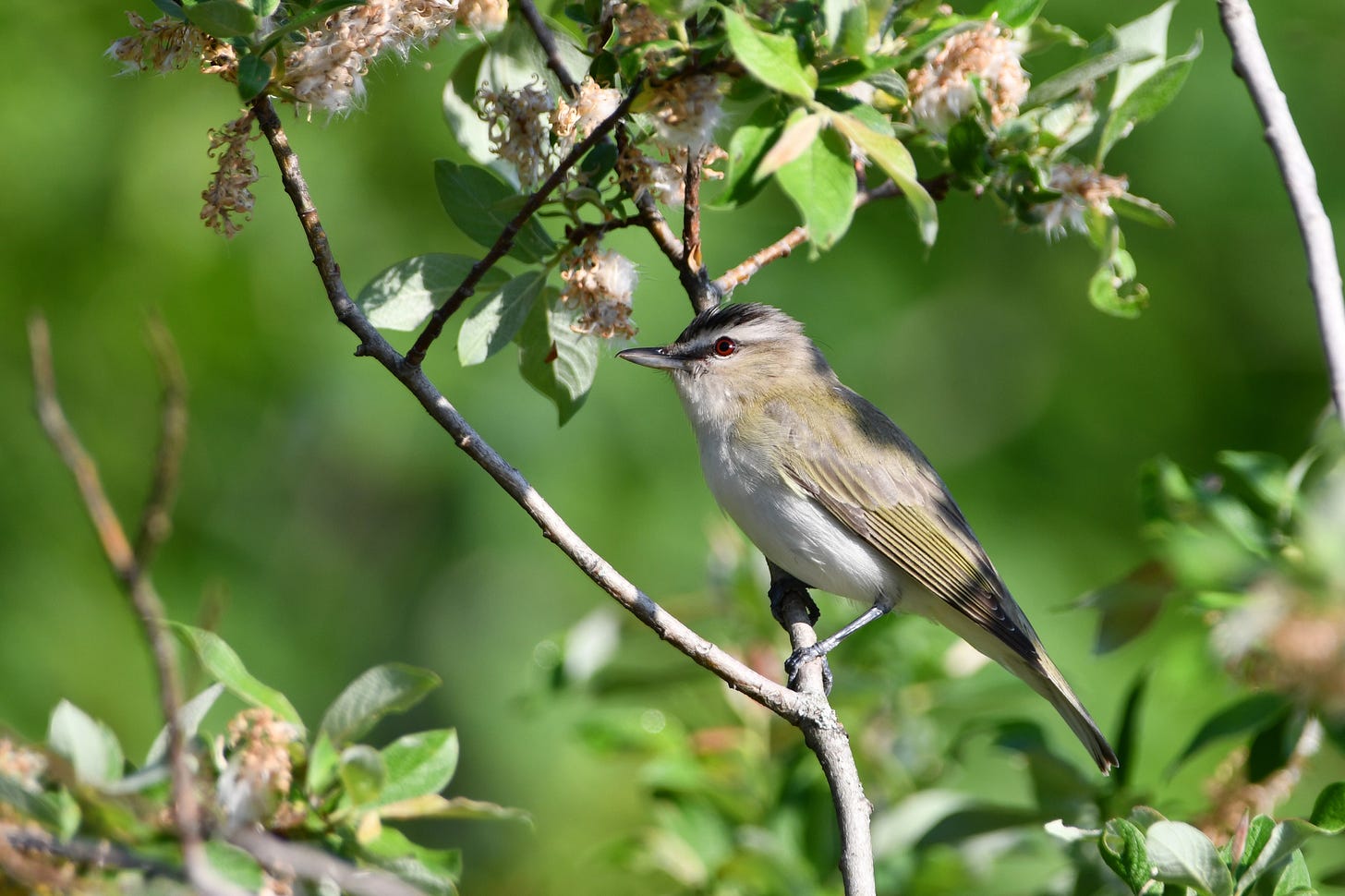
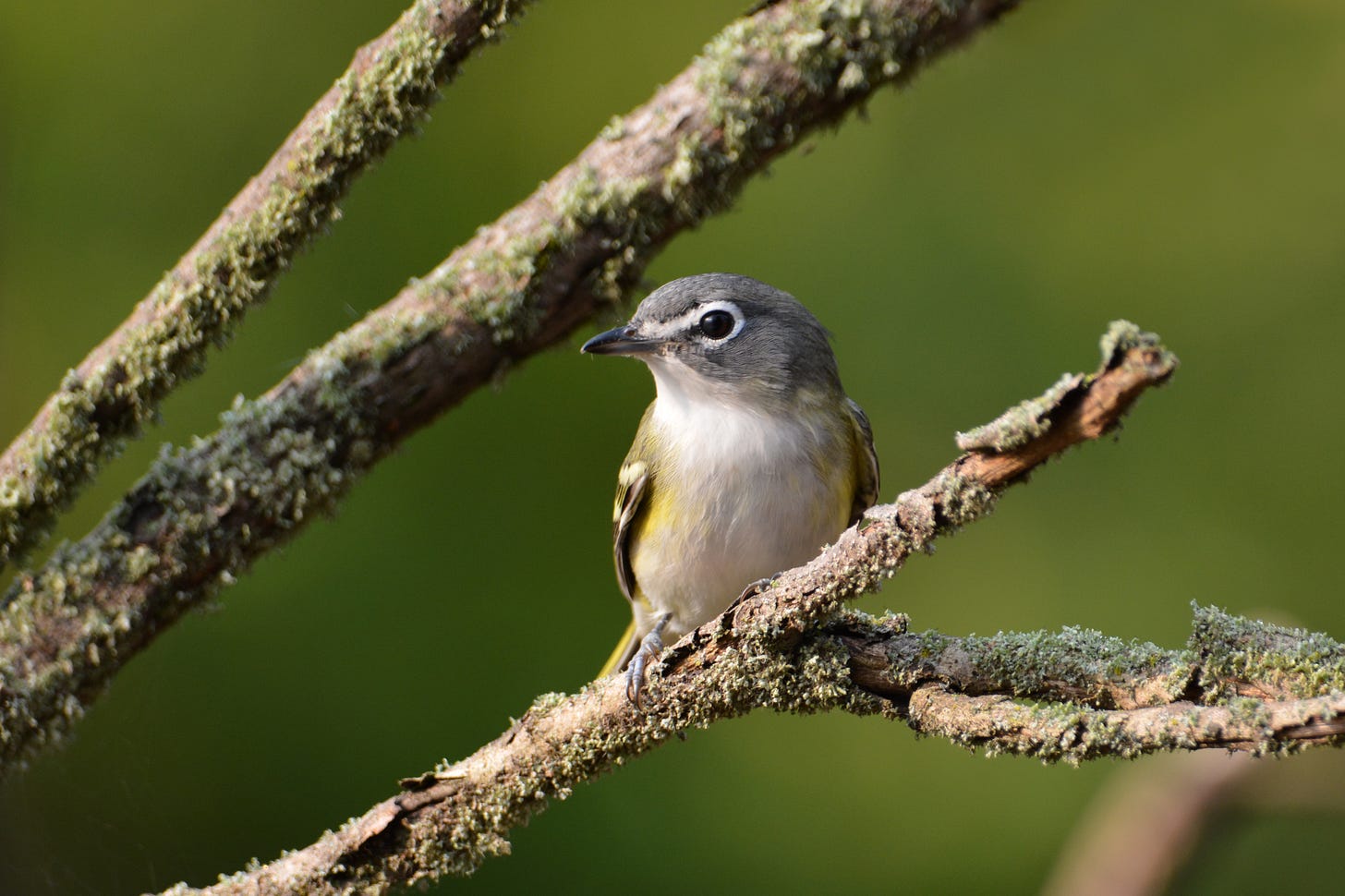


Another excellent issue! Thanks to you, I've been much more attuned to bird songs. The piece on comparing the robin's song with other similar-sounding birds was very helpful. Thanks as well for making me aware of Birdcast! I'll be checking in!
I really enjoyed reading this. As a Minnesota I always welcome the early spring golden eyes with open arms.